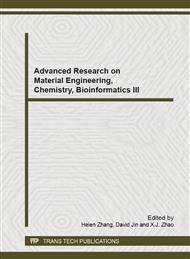p.363
p.367
p.372
p.376
p.384
p.388
p.392
p.398
p.403
Study on a Dynamical Model of Plankton in Lake Environment
Abstract:
To study the changes of biomass of plankton and algae in lake environment, a new model was purposed. We applied the methods of qualitative analysis and numerical simulations. The main results were that there was a periodic solution, a globally stable equilibrium in this model under specific conditions, respectively. In conclusion, as increases of rate c, on which plankton are swallowed, there is a static equilibrium, a dynamic equilibrium, and then the equilibrium disappear, and at last the boundary point is globally stable, which means that plankton become extinct.
Info:
Periodical:
Pages:
384-387
Citation:
Online since:
October 2013
Authors:
Keywords:
Price:
Сopyright:
© 2014 Trans Tech Publications Ltd. All Rights Reserved
Share:
Citation:


